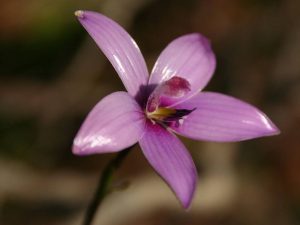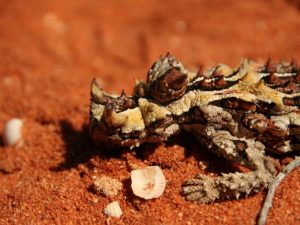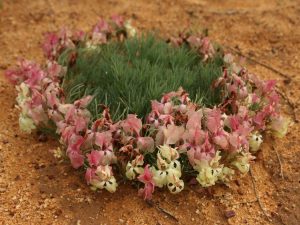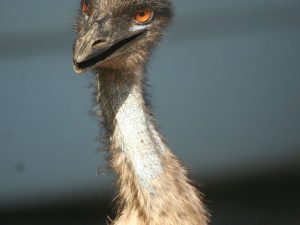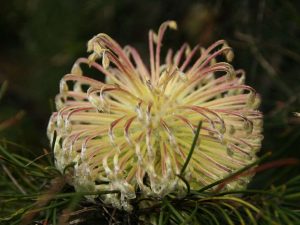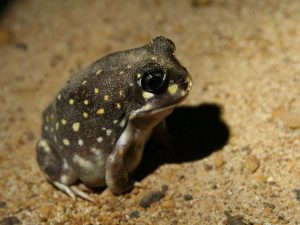
wild flowers and wildlife
The south west of Western Australia is a vast botanical garden – tall forest, woodlands, shrublands and heath are home to over 4,000 species, 80% of which grow nowhere else; a truly remarkable flora.
Download leaflet
Dates
To be confirmed
Leader
To be confirmed
Price
To be confirmed
Included
Local transport as specified in the itinerary. 17 nights accommodation, full board, except lunch and dinner on Day 9. All excursions as described in the itinerary. Admission fees and National Park fees.
Not included
Refreshments. Gratuities. Travel insurance. Visa costs. Covid tests and associated costs.
Group size
Minimum 4, maximum 14.
Mid-spring is the time when the flowers are at their best. Banksias and Grevilleas, Hakeas and myrtles, kangaroo paws, wreath-flowers, trigger flowers and a bewildering diversity of orchids, plus oh so many more, combine to create a colourful floral extravaganza.
We start and finish in Perth, concentrating on discovering the magnificent array of wild flowers in the state, while also gaining a deeper appreciation and understanding of the wider natural heritage: the itinerary will give us plenty of opportunity to see mammals, reptiles and the chance to catch up with many of Western Australia’s endemic birds.
The Perth hinterland is as diverse as it is fascinating. From the Darling Ranges we travel north through the Banksia-Eucalypt woodlands and mallee shrub and heathlands to Pinnacles National Park. Further north lies Kalbarri National Park, where a huge variety of wild flowers clothe the plains surrounding the Murchison River gorges.
Passing south from Perth through the coastal shrublands, many roads are lined with wild flowers, ablaze with colour. A canopy walkway will take us high into the famed Karri-Tingle and Jarrah-Marri forests. Coastal cliffs provide great viewing of breeding Southern Right Whales offshore of Fitzgerald River National Park. East lie the Dryandra woodlands home to endangered marsupials, while in the Stirling Range we will climb onto the summit ridge, with flowers in abundance and lizards much in evidence.
Download trip report
Please note that holidays change, although sometimes only slightly, from year to year and previous trip reports may not reflect the planned itinerary, or other holiday details, for the current trip. Please ask us if you would like to know of any significant differences.
Day 1 The holiday starts in Perth, where we will meet up at our city centre hotel in time for dinner.
Day 2 We visit the renowned Kings Park Botanic Gardens before moving on to Ellis Brook Valley Reserve, which has some of the highest concentrations of wild flower species in the Perth region.
Day 3 We drive north from Perth to Cervantes, familiarising ourselves with the heathland flora of the sandplains. We will also visit the renowned Pinnacles region, famed for its limestone formations.
Day 4 We take an excursion today on to the vast Hi Vallee Farm, exploring this botanical treasure trove by 4WD. This region has an incredible array of Western Australian wild flowers and we will be visiting right at the time of peak flowering.
Day 5 We visit Lake Thetis to see its ’living fossils’, the fascinating stromatolites before departing for the spectacular Kalbarri National Park.
Day 6 Our day is spent in Kalbarri National Park, discovering the huge variety of wild flowers, the Murchison River gorges and the coast. The sand plains and coastal cliffs abound in magnificent displays of river gums, gold and orange banksias, grevilleas, kangaroo paws, featherflowers, starflowers and smokebushes.
Day 7 We turn inland to the dry Tallering region. Here amidst the sand and shrubland grow perhaps the most spectacular of Western Australia’s wild flowers, the Wreathflower Lechenaultia macrantha. The flora in this region is markedly different from any other area on the trip.
Day 8 We visit Lesueur National Park. Amongst over 900 flower species are rare Banksia tricuspis and Banksia attenuata.
Day 9 Today is a free day to explore Perth.
Day 10 We head over 300km east, inland towards Hyden.
Day 11 We head to the Ravensthorpe Range and Hopetoun region passing the salt pans of Lake King, and widespread roadside shrublands ablaze with colourful flowers.
Day 12 We’ll check out the shorebirds on the nearby lagoon before enjoying shrublands including such world-renowned species as Royal Hakea, Pincushion Hakea, Four-winged Mallee, Scarlet Banksia, Qualup Bell, and Barrens Regelia. Continuing west along the Albany Highway, a fascinating array of orchids may include such wonderful (and wonderfully named!) species as the Zebra Orchid, Fringed Mantis Orchid, Wispy Spider Orchid, Silky Blue Orchid and Sugar Candy Orchid.
Day 13 The southern end of Fitzgerald River National Park beckons today. We’ll explore the coastal heathlands, look out for Southern Right Whales in the clear waters just off the shore, and enjoy the wildflower diversity of Quaalup, also home to the Endangered Carnaby’s Black-cockatoo.
Day 14 An unmissable highlight of any visit to Western Australia is the Stirling Range. This dramatic National Park has over 1,000 species of flowering plant and a wonderful array of birds, while a half-day walk up onto the summit ridge is one of the most rewarding walks anywhere.
Day 15 We pay a short visit to the fascinating and scenic William Bay, before continuing west into the renowned Jarrah and Karri forests to walk amidst the canopy of these magnificent trees on a high-level canopy walkway.
Day 16 We visit the fascinating and vast dune systems that stretch along 130km of coastline within D’Entrecasteaux National Park.
Day 17 We depart north for Dryandra Woodland National Park, a very special place and one of the few remaining areas of pristine south-western woodland in Western Australia. Larger marsupials such as the Black-goved Wallaby, Tammar Wallaby, Western Brushtail Possum and possibly even a Numbat may be encountered.
Day 18 We’ll have to time to stop en route to sample yet more roadside colour and maybe last few orchid species before we arrive back at Perth Airport during the early afternoon.
Please note that the itinerary may be changed to suit the weather or other practicalities at the discretion of the leaders.
All accommodation is of a very comfortable standard and all rooms have en-suite accommodation. In most locations it is average to good standard, 3 star equivalent, although higher than this on occasion.
All meals are included in the holiday price, with the exception of lunch and dinner on day 14, your free day in Launceston.
We shall be using an air-conditioned coach throughout with microphone, ample luggage storage in the trailer, and tea and coffee provisions. The coach will travel on the Bruny Island ferry with the group.
Travel to Perth
International flights and travel to/from Perth are not included in the holiday to allow you maximum flexibility in making your personal travel arrangements.
Time zone
Western Australia is seven hours ahead of the UK at this time of year.
Entry requirements
If you are a British passport holder, your passport should be valid for the proposed duration of your stay. If you are transiting another country on your way to or from Australia, check the entry requirements for that country.
British passport holders must apply for an eVisitor visa before arranging their travel to Australia.
We will be travelling in Western Australia’s springtime. Days are long and sunny, nights are mild. Spring is an excellent time for walking in the bush and a variety of other outdoor activities. Western Australia has a relaxed lifestyle, so dress will be informal at all times. Bring comfortable clothing and anticipate a similar range of temperatures to a British summer – it should be pleasantly warm: likely temperature range around Perth in September is 10 C to 25 C: it will be warmer in the north and inland, cooler in the south and on the coast. Rain is always possible at all times.
This is an 18-day tour, stopping at several locations, and you therefore need to be generally fit and able to cope with ‘living out of a suitcase’ and frequent journeys between areas.
On some days we will not be walking very far, but on others we will take longer walks. Most walking will be at a slow pace to give us the time to enjoy the plants, scenery and wildlife. If you are a slow walker however, please ring us to discuss whether any of the walks will be a problem. We do not do any strenuous hikes but we may be out for a few hours at a time on some days. All walks are optional and you can choose to enjoy a day around the hotel if you prefer (or half a day if this fits in with the transport arrangements), providing we are not moving on to another location that day.
To see the best of the flowers, it is necessary to walk on rougher ground and up small slopes. Comfortable footwear is essential, and it must be strong enough to withstand rough or rocky ground underfoot: walking boots or stout walking sandals are essential for all areas out of the towns.
The sun can be very strong and sun protection (hat, sunglasses and sun cream) is essential.Personal travel insurance providing good medical cover is essential for this trip. Safety advice given by the leaders must be heeded at all times particularly when walking in the countryside. We will send you advice on health and safety issues before the tour.
General inoculations for travel are recommended.

